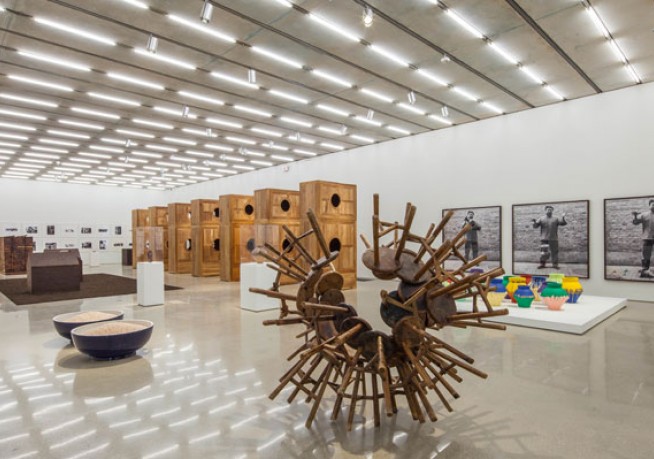Who’s your favorite musician? Actress? What’s your favorite movie? Book?
Almost everyone has a response to these questions. Kanye West. Keira Knightley. Star Wars. Harry Potter. Rarely do the answers “I don’t listen to music,” or “I don’t watch movies,” or “I don’t read” leave the questioner satisfied.
Who is your favorite visual artist? To this question, the common response is less automatic. Historical visual artist? Perhaps, Monet. Maybe, Warhol.
Contemporary visual artist? This question rarely hazards a spontaneous answer.
Every day, we are inundated with visual messages. Instagram and Facebook allow each user to develop a personal aesthetic, sometimes without even consciously realizing it. We know which people we follow are more likely to post “artsy” photos. We agonize over what filters to use. Campus groups have graphic designers to produce social media content and posters. It is ingrained in our culture that visual images spark interest, produce reactions, and elicit actions that words alone cannot.
Despite this preference for the visual in media, how often are we active consumers of visual art? How often do we seek out the works of contemporary visual artists?
When compared to other art forms, it seems that visual art — in the form of painting, drawing, photography, ceramics, sculpture, digital design and other such media — has been shortchanged in our increasingly digital and visual landscape. As Georgetown students, we have access to some of the best art museums in the country. However, it is much less common to know which exhibits will be on display in the National Gallery than it is to know who will be playing at the 9:30 Club this Saturday night.
In our society, especially as college students, being an active consumer of visual art has an air of pretentiousness and comes with the fear of being labeled “hipster.” No one is labeled pretentious just for having an opinion about music. No one is labeled pretentious just for liking movies. With visual art, however, going to a gallery opening, Instagramming a Jeff Koons installation, making your cover photo a Shepard Fairey piece are all out of the ordinary; an interest of any kind in this art form is unique. Admittedly, most visual artists do not have the power of an industry behind them. We are not flooded with advertisements about Kehinde Wiley’s newest series as we would be with a new Katy Perry album.
Despite this lack of overarching fame and popularity, it is important to be in touch with the visual art world. It is here that the artists of our generation are producing works that give a glimpse into how others view the world. There is an inclusiveness to this form of art–anyone can be a part of this world, just by taking the time to explore a new art form.
In some ways, the visual images that we encounter every day, the Instagrams and the Snapchat stories, can be classified as art. There is intent, audience, and consideration put into these images. However, visual artists, just as musicians and filmmakers, explore complex and relevant topics through their work. Social media tends to reduce this complexity to “likes” and “favorites,” rather than a consideration of the conceptual basis of art. In this context, where we constantly quantify how we feel about imagery, it is important to step back and question why the images we see are produced. What is the artist trying to convey? What do you feel when you view the piece? Can these feelings be simply expressed in “like” or “dislike,” or do they evoke complex emotions like discomfort, bliss, calm, and confusion, or maybe several feelings all at once?
Taking the time to consider all the varied reactions you may have to art can be a social or personal activity. It can lead to lively conversation as well as introspection. It can help you develop an understanding of varied perspectives as well as an understanding of yourself. It is time to break through the stigma of the “hipster” who goes to gallery openings and break down the wall between “regular people” and the art world. There is nothing inherently “other” about art, but rather art is a reflection of innately human experiences. Bringing a wider range of individuals as consumers and producers of this art can only improve the experience.
Next time you see a gallery opening advertised, go to it. Look through visual art on the internet, just like you would if you were looking for new music to listen to, or if you were scrolling through your Instagram feed. There are wonderful, insightful, powerful, and thought-provoking works being created constantly. They are not created to be viewed only by some, but rather created for all of us to contemplate, enjoy, and interpret. Take a look.
Photo: www.pamm.org





